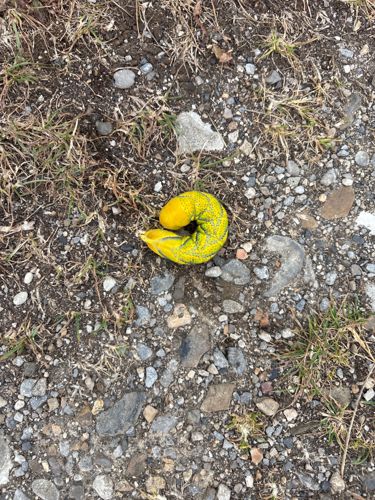Hog-nosed Snake Caterpillar
Scientific Name: Darapsa myron
Order & Family: Order: Lepidoptera, Family: Sphingidae (Hawk Moths or Sphinx Moths)
Size: Larvae (caterpillars) can grow quite large, typically ranging from 5 to 7 cm (2 to 2.75 inches) in length.

Natural Habitat
Hog-nosed snake caterpillars are found in areas where their host plants grow, such as vineyards, gardens, woodlands, and edge habitats.
Diet & Feeding
The caterpillars are herbivorous, feeding primarily on the leaves of various plants, especially grapevines (Vitis species) and Virginia creeper (Parthenocissus quinquefolia).
Behavior Patterns
Hog-nosed snake caterpillars are typically active during the summer and early fall. They feed constantly to grow, shedding their skin several times. When disturbed, they may inflate their front body to mimic a snake's head, hiss, and even strike, though they are harmless. This defensive behavior is known as mimicry. Prior to pupation, they often change color, becoming more yellowish or brownish, as seen in the image, before burrowing into the soil to pupate.
Risks & Benefits
These caterpillars are harmless to humans; they do not sting or bite. While they can cause defoliation to host plants, especially grapevines in large numbers, they are not typically considered a major agricultural pest. As part of the food web, they serve as a food source for birds and other predators. The adult moths are important pollinators of various night-blooming flowers.
Identified on: 8/26/2025